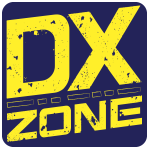Top Amateur Radio Websites – Issue 2110
Top Amateur Radio Websites – Issue 2109
Top Amateur Radio Websites – Issue 2108
Top Amateur Radio Websites – Issue 2107
Top Amateur Radio Websites – Issue 2106
Top Amateur Radio Websites – Issue 2105
WSJT-X 2.4.0-RC1 Introduces new Q65 Mode
The Q65 Mode
WSJT-X 2.4.0 introduces Q65, a digital protocol designed for minimal two-way QSOs over especially difficult propagation paths. On paths with Doppler spread more than a few Hz, the weak-signal performance of Q65 is the best among all WSJT-X modes. Q65 is particularly effective for tropospheric scatter, rain scatter, ionospheric scatter, and EME on VHF and higher bands, as well as other types of fast-fading signals.
Q65 uses 65-tone frequency-shift keying and builds on the demonstrated weak-signal strengths of QRA64, a mode introduced to WSJT-X in 2016. Q65 differs from QRA64 in the following important ways:
A new low-rate Q-ary Repeat Accumulate code for forward error correction
User messages and sequencing identical to those in FST4, FT4, FT8, and MSK144
A unique tone for time and frequency synchronization. As with JT65, this “sync tone” is readily visible on the waterfall spectral display. In addition, Q65 provides a sensitive “sync curve” near the bottom of the waterfall window. Unlike JT65, synchronization and decoding are effective even when meteor pings or other short signal enhancements are present.
Optional submodes with T/R sequence lengths 15, 30, 60, 120, and 300 s and different tone spacings.
A new, highly reliable list-decoding technique for messages that contain previously copied message fragments. No use is made of a callsign database.
Highly effective message averaging for situations where single transmissions are too weak to be decoded.
A “multi-decode” option that attempts to decode all Q65 signals in the received passband.
About WSJT-X
WSJT-X is a computer program designed to facilitate basic amateur radio communication using very weak signals.
WSJT-X Version 2.4 offers 13 different protocols or modes: FT4, FST4 and FST4W, FT8, JT4, JT9, JT65, Q65, QRA64, ISCAT, MSK144, WSPR, and Echo. The first eight are designed for making reliable QSOs under weak-signal conditions. They use nearly identical message structure and source encoding. JT65 and QRA64 were designed for EME (“moonbounce”) on the VHF/UHF bands and have also proven very effective for worldwide QRP communication on the HF bands
WSJT-X 2.3.0 new version available to download
WSJT-X: New in Version 2.3.0
The WSJT Development Group has announced the general availability release of WSJT-X Version 2.3.0. WSJT-X 2.3.0 General Availability release adds the new modes FST4 and FST4W along with many defect repairs. See summaries below and for the prior release candidates (2.3.0-rc1 through -rc4) of this version for details. - FST4/W: Disable envelope shaping at start and end of transmission when environment variable FST4_NOSHAPING=1. Works for fst4sim too. - Add time stamp to error message boxes to aid diagnosis. - Repair a defect that caused crashes at start up for some macOS Big Sur users. - Repair a defect that could cause the jt9 slow mode decoder process to exit incorrectly with a failure status. - Updated CTY.DAT file. WSJT-X: New in Version 2.3.0 WSJT-X 2.3.0 introduces FST4 and FST4W, new digital protocols designed particularly for the LF and MF bands. Decoders for these modes can take advantage of the very small Doppler spreads present at these frequencies, even over intercontinental distances. As a consequence, fundamental sensitivities of FST4 and FST4W are better than other WSJT-X modes with the same sequence lengths, approaching the theoretical limits for their rates of information throughput. The FST4 protocol is optimized for two-way QSOs, while FST4W is for quasi-beacon transmissions of WSPR-style messages. FST4 and FST4W do not require the strict, independent phase locking and time synchronization of modes like EbNaut. The new modes use 4-GFSK modulation and share common software for encoding and decoding messages. FST4 offers T/R sequence lengths of 15, 30, 60, 120, 300, 900, and 1800 seconds, while FST4W omits the lengths shorter than 120 s. Submodes are given names like FST4-60, FST4W-300, etc., the appended numbers indicating sequence length in seconds. Message payloads contain either 77 bits, as in FT4, FT8, and MSK144, or 50 bits for the WSPR-like messages of FST4W. Message formats displayed to the user are like those in the other 77-bit and 50-bit modes in WSJT-X. Forward error correction uses a low density parity check (LDPC) code with 240 information and parity bits. Transmissions consist of 160 symbols: 120 information-carrying symbols of two bits each, interspersed with five groups of eight predefined synchronization symbols. We recommend that on the 2200 and 630 m bands FST4 should replace JT9 for making 2-way QSOs, and FST4W should replace WSPR for propagation tests. Operating conventions on these LF and MF bands will eventually determine the most useful T/R sequence lengths for each type of operation.
About WSJT-X
WSJT-X is a computer program designed to facilitate basic amateur radio communication using very weak signals.
WSJT-X Version 2.3 offers ten different protocols or modes: FT4, FST4 and FST4W, FT8, JT4, JT9, JT65, QRA64, ISCAT, MSK144, WSPR, and Echo. The first eight are designed for making reliable QSOs under weak-signal conditions. They use nearly identical message structure and source encoding. JT65 and QRA64 were designed for EME (“moonbounce”) on the VHF/UHF bands and have also proven very effective for worldwide QRP communication on the HF bands



































































